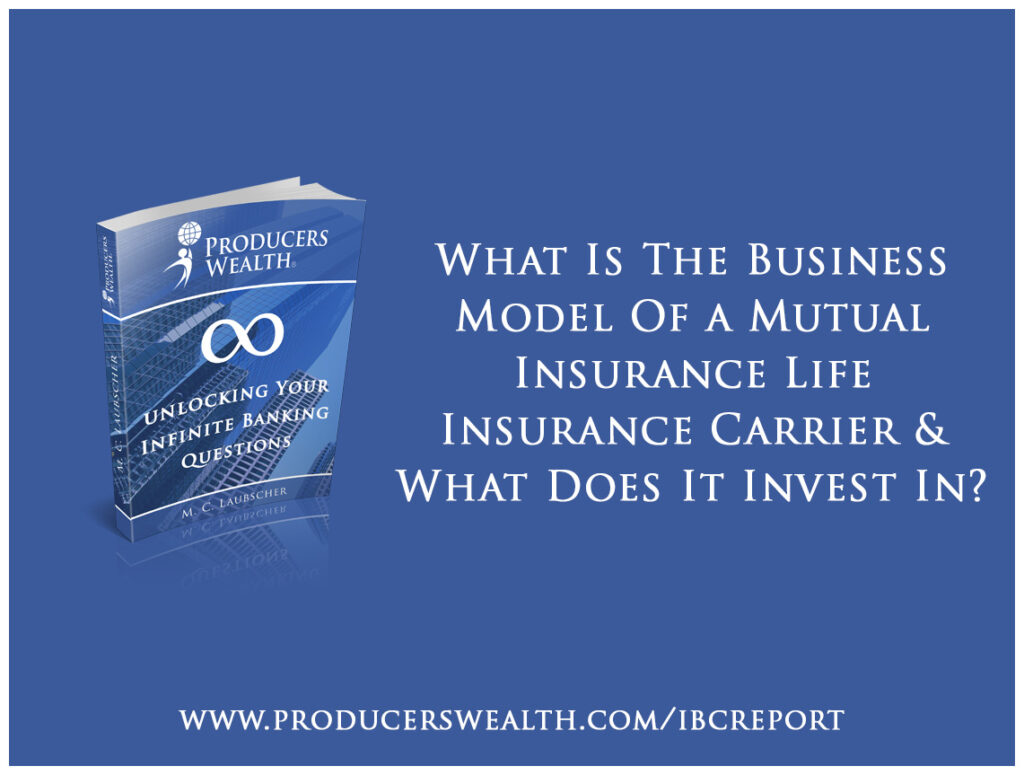
A mutual insurance life insurance carrier is a type of insurance company that is owned by its policyholders, rather than shareholders. As a result, the company’s primary objective is to provide policyholders with the best insurance products and services while maintaining financial stability.
Here’s an overview of the business model of a mutual insurance life insurance carrier and its typical investments:
Premiums and insurance products: Mutual insurance carriers offer various insurance products, including whole life, term life, and universal life policies. Policyholders pay premiums to maintain their coverage, which serves as the primary revenue source for the company.
Policyholder ownership: Policyholders are considered owners of the mutual insurance company. As owners, they may be entitled to receive a share of the company’s profits in the form of policyholder dividends. These dividends can be used to reduce premiums, increase cash value, or purchase additional coverage. However, it’s important to note that dividends are not guaranteed and depend on the company’s financial performance.
Investments: Mutual insurance companies invest a significant portion of the premium income they receive to generate returns that help cover claims, operating expenses, and maintain the company’s financial strength. The investment portfolio of a mutual life insurance carrier typically consists of:
- Fixed-income securities: These include government and corporate bonds, which provide a steady stream of income and relatively low risk.
- Mortgage loans: Insurance companies may invest in commercial and residential mortgage loans, providing a reliable source of income and diversifying the portfolio.
- Real estate: Some mutual insurance carriers invest in real estate properties, which can offer both income and capital appreciation potential.
- Stocks and other securities: A smaller portion of the portfolio may be invested in stocks or other securities to achieve higher returns, although these investments generally carry higher risk.
- Policy loans: Mutual insurance carriers also earn income from policy loans issued to policyholders who borrow against the cash value of their policies.
Financial strength and stability: A key aspect of a mutual insurance company’s business model is maintaining financial strength and stability. This ensures the company can meet its long-term obligations to policyholders, pay claims, and maintain a strong credit rating. Mutual insurance carriers are regulated by state insurance departments, which monitor their financial health and ensure compliance with industry regulations.
Watch all of our educational videos on Infinite Banking here.
Disclaimer and Waiver
Michiel Laubscher & Laubscher Wealth Management LLC is not an investment advisor and is not licensed to sell securities. None of the information provided is intended as investment, tax, accounting, or legal advice, as an offer or solicitation of an offer to buy or sell, or as an endorsement, of any company, security, fund, or other offerings. The information should not be relied upon for purposes of transacting securities or other investments. Your use of the information contained herein is at your own risk. The content is provided ‘as is’ and without warranties, either expressed or implied. Michiel Laubscher & Laubscher Wealth Management LLC does not promise or guarantee any income or specific result from using the information contained herein and is not liable for any loss or damage caused by your reliance on the information contained herein. Always seek the advice of professionals, as appropriate, regarding the evaluation of any specific information, opinion, or other content.





